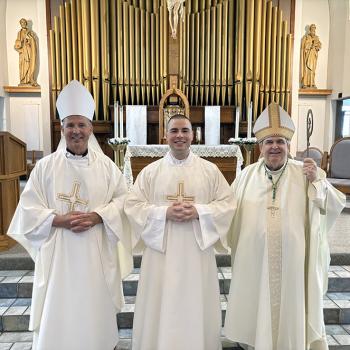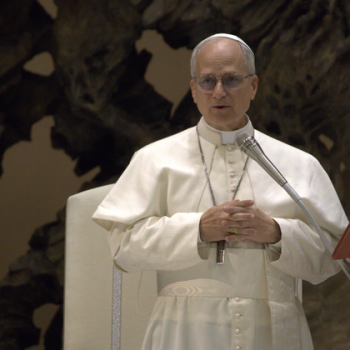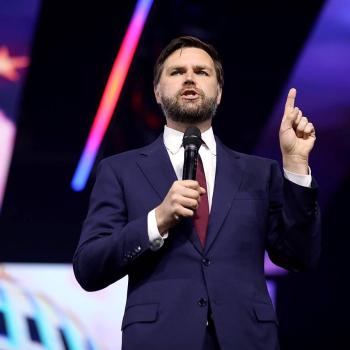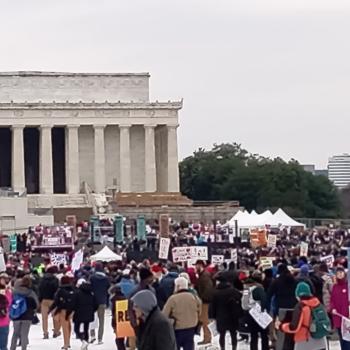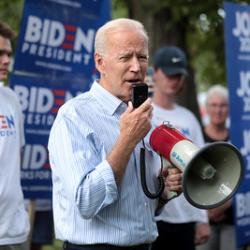I must confess, I am a beat behind. Partly for personal reasons, partly for stylistic ones, and partly because our pope is so full of surprises (and provokes so many reactions), it’s been a little hard to keep up. But if the first wave of reactions to the impactful interview with our pope of surprises that America and other Jesuit magazines scored has largely subsided, the time may be all the more opportune to revisit afresh the substance of Pope Francis’ witness – and the filters he is constantly read through.
The America interview, as many have said, has sent “shock waves”, to be sure. Some of those commenting from the left wasted no time spinning a triumphalistic reading (notwithstanding the unappeasable angry left), driving more deeply the wedge between “Pope Benedict Catholics” and “Pope Francis Catholics”, or for that matter between competing interpretations of Francis dividing left and right internally, which drives much of the Church in the opposite direction from Francis’ own preference for diplomacy.
The problem is in the ideological narratives that dominate the socio-political and (sadly) ecclesial scene, forcing the Church into a schema that it can’t fit into. The US press is thinking within a US political paradigm and struggling to make sense of things that don’t fit that paradigm’s boxes, which the Church usually doesn’t. The same is true even of many Catholics, as a toxic political atmosphere too often obscures the catholicity that should have a greater claim on us.
And thus, out of a rich and multifaceted conversation, much ink has been spilled over a few lines touching on society’s (not only the Church’s) pelvic obsessions, ironically failing to take Pope Francis’ advice about putting such things in context and instead making them as titillating as possible. I’d love to see headlines noting that the pope called the Church both “the people of God” and “holy mother the hierarchical church” (borrowing an Ignatian phrase), or proclaiming the respect and brotherly affection he has expressed for his predecessor, or underlining his marvelously organic view of the “deposit of faith”.
To be fair, not all the responses out there have been quite so ideologically driven. The always well-balanced John Allen had a refreshingly different take on the above interview (and Francis’ pontificate in general), calling it “a breakthrough victory for the Catholic middle.” Later, responding to charges of pursuing a red herring with the minor factual corrections he made regarding the pope’s more recent interview with Eugenio Scalfari, Allen offered a characteristically clear and reasoned explanation for why he believes the “time-honored script of Vatican fusspots trying to edit or correct a bold pope” does not apply to the case in question. Measured as he is, Allen couldn’t help but let a bit of frustration (with which I strongly sympathize) show as he ended with the resigned lament, “It would be nice to live in a world in which a relatively small correction to the historical record wouldn’t immediately be assumed to betray a vast political agenda — nice, that is, but maybe not terribly realistic.”
Over at Ethika Politika, Larry Chapp responded to the America interview (and many reactions to it) from an admirably self-critical conservatism. And Michael Bradley similarly critiqued the sensationalizing and ideologizing of some of the pope’s remarks, raising an important distinction between “overthrow” and “reform” (which will be germane to my points below), while also disclaiming any need to construe “a perfect segue between previous papacies and this one,” and ending with the humble resolution to “try better to understand the Pope on his own plane of expression and thought qua Jesuit priest, rather than clucking at him for not meeting me on my own.”
America itself has also offered an impressive range of responses to the interview from prominent theologians, the best of which point to Pope Francis’ nonconformity to any partisan molds.
Of course, our affable pontiff has been attracting plenty of attention before the interview broke, from within and beyond the Catholic Church. Of the surprising number of assessments that have sprung up from the Evangelical community, I was particularly struck by Sojourners’ Cathleen Falsani’s proclamation of her pope-crush, since the reasons she lists for this make up a lopsided mix of the three general reasons for his popularity that I observed in my previous post. The majority of her accolades fall under the second category I mentioned (extraversion), as she gushes about “Papa Frank’s” free distribution of kisses and hugs, while managing a strange combination of that and the previous category (simple living) in what she calls his “humble swagger.” And in an oddly violent metaphor, she states in passing that he has the Curia “in his crosshairs.”
Crosshairs – really?
Pope Francis is approaching a much-needed reform – yes, even an overhaul – of the Curia. He is not shooting it down (and he wouldn’t be very true to his famously pastoral style if he did). Contrary to the hopes of some and the fears of others, he is not gutting the tradition of the Church he serves, turning it into “just an ornate restaurant that only serves wafers” as Jon Stewart suggested in one of his more confused and directionless segments on the Catholic Church, in which he not only confused papal infallibility with papal omniscience but inexplicably threw a bone to those who would promote an excessively narrow view of Catholic tradition.
Stewart asks, perhaps along with a number of self-proclaimed traditionalists, “What exactly of Catholicism is left?” I answer: everything. Indeed, it is a tradition without the essentials Pope Francis is pointing to – mercy, humility, collegiality, discernment, balance, hope, prayer, and yes, “Jesus and [for some] celibacy” – that would be a stripped-away one. For our Holy Father, a true “son of the Church”, what ties these essentials together is a deep and broad concern for the vulnerable, without exception. This same concern that gave rise to John Paul II’s famous critique of a “culture of death” is now being expressed in Francis’ preferred term “throwaway culture”, but the fundamental message is the same: in the eyes of the Church, and in a just world, no category of human lives – not the preborn, not the elderly, not the disabled, not the migrants, not the poor – can be considered expendable.
Some have praised (or disparaged) Pope Francis for being “untraditional”, but this reflects a profound misunderstanding of what tradition is. By critiquing a rules-over-mercy faith (or what one recently confirmed friend of mine would call “bean-counting” Catholicism), Pope Francis is not shifting from one narrow ideological focus to another, as some would have him do, but calling us to embrace the whole of our faith – which, after all, is what “catholic” means. He is not upending Catholic tradition, but holding up its treasures for the world to see, including some very classical images such as that of the Church as mother. Along the same lines, his recent act of consecrating the world to the Immaculate Heart of Mary presents a unique opportunity to show the world the beauty in our maternal Church’s Marian devotion.
As is readily apparent, I am a willing critic of the sometimes pervasive misunderstandings I perceive about our church and its leaders, but I acknowledge the need for caution in how such critiques are made. If, taking a lesson from Pope Francis himself, we can correct the misconceptions with pastoral sensitivity (or perhaps more applicably to most of us, evangelistic sensitivity) rather than hostility, then we have a tremendous opportunity to show the world the same gems within the Catholic tradition that our pope is uncovering.
For a whole mix of reasons, our pope has caught the world’s attention. If the world finds his message surprising, this presents a remarkable opportunity to reveal the greatest surprise of all: that what he brings is not a radically new message but a radically ancient one – as Cardinal Donald Wuerl said in the most recent issue of America, “an old message in a new and exciting form.” It is indeed radical in its closeness to the roots that have nourished the Christian Tradition all along.





